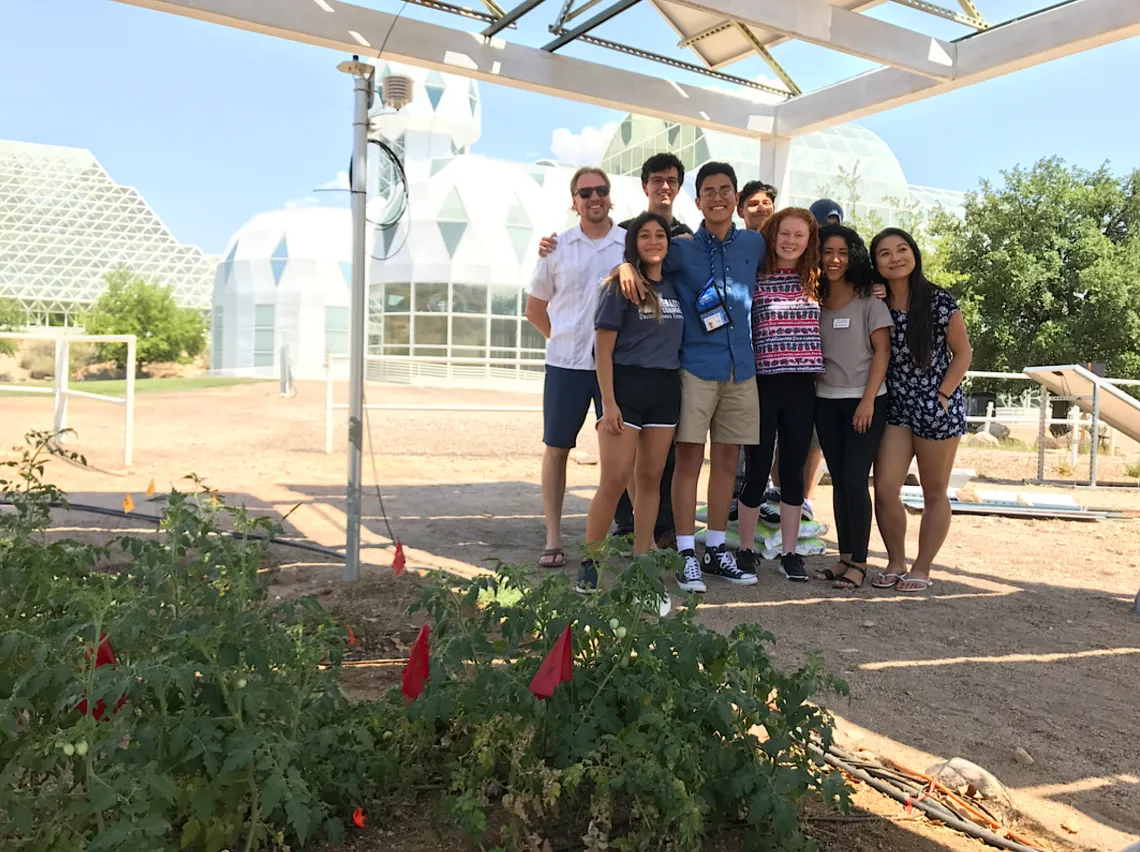Growing Food and Energy Solutions
Named by Fast Company magazine as a finalist for its 2018 World Changing Ideas Awards, the UA’s agrivoltaics project, which involves growing plants under solar panels, is an innovative solution to our food, energy, and water challenges.

In 2016, Greg Barron-Gafford and his colleagues were studying the environmental impacts of solar panels. They found that the panels increase the temperature of the immediate environment – a “heat-island” effect – which decreases the efficiency of the panels.
“I thought ‘how can we use plants to solve this engineering problem?’” said Barron-Gafford, an associate professor in the UA School of Geography and Development in the College of Social and Behavioral Sciences. He knew that the evaporative cooling of plants should work like a swamp cooler, lowering the temperature of the microclimate.
“The first thing you think is you can’t stick plants under any kind of shady environment,” Barron-Gafford said. “But many plants don’t need full sunshine.”
In 2017, Barron-Gafford's research team, which includes UA undergraduate and graduate students, began growing crops beneath 9-foot solar arrays at the UA's Biosphere 2 facility, with which Barron-Gafford is affiliated. As expected, the experimental plants helped keep the solar array cooler during the day, increasing efficiency by 5 percent.
Plus, their initial test plots of tomatoes, peppers and cilantro under the shaded solar canopy grew better than a control garden exposed to full sun. The shaded crops also required only half the amount of water as crops grown in open sun, a not inconsequential bonus for hot, arid climates.
In collaboration with the UA Community and School Garden Program, led by UA geographer Sallie Marston, the team extended its experimental plots to local K-12 schools with large solar arrays. "Not only is the science being replicated in multiple locations, but also the next generation is seeing how we can take out-of-the-box ideas to solve real problems — all while applying STEM practices in their daily learning," Barron-Gafford said.
Agrivoltaics – a mash up of agriculture and photovoltaics, or solar panels – is being tested by other facilities around the world. But the UA project is the only one testing the concept in an arid environment. “About a third of the globe experiences long periods of dry conditions,” Barron-Gafford said. “We will serve as a resource for environments around the planet.”
Barron-Gafford said the UA is also unique in its “systems-approach” to the issue. “We are not coming at it from just the energy side or the food side. We are looking at the nexus of food, energy and water science and examining how the co-location of food and energy production helps us in terms of these three primary human needs.”
What’s next? The researchers plan to “scale-up” the production to larger plots and investigate the trade-offs involved with reducing water use.
“We need to think about the future,” Barron-Gafford said. “We have a quickly growing population and all of these people need food and energy and water. It seems like a no brainer to be more efficient with the land we have.”

